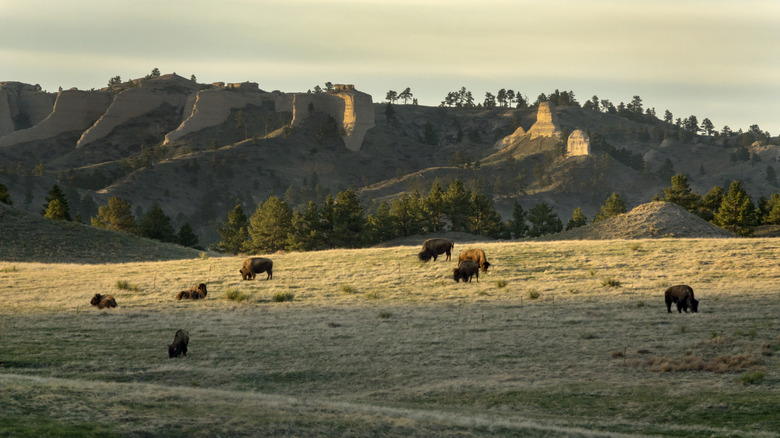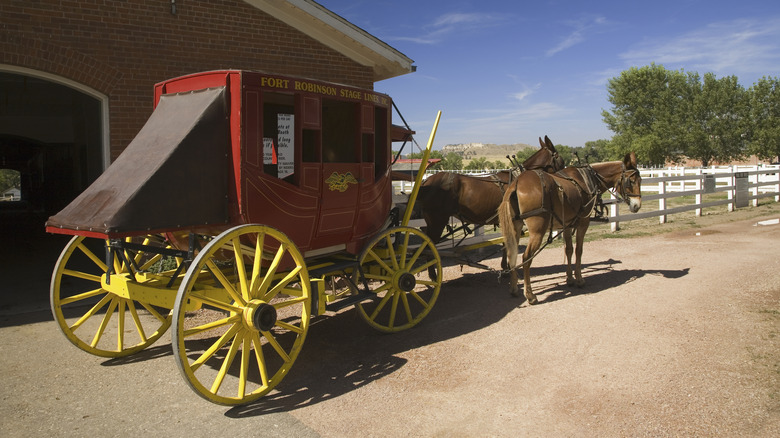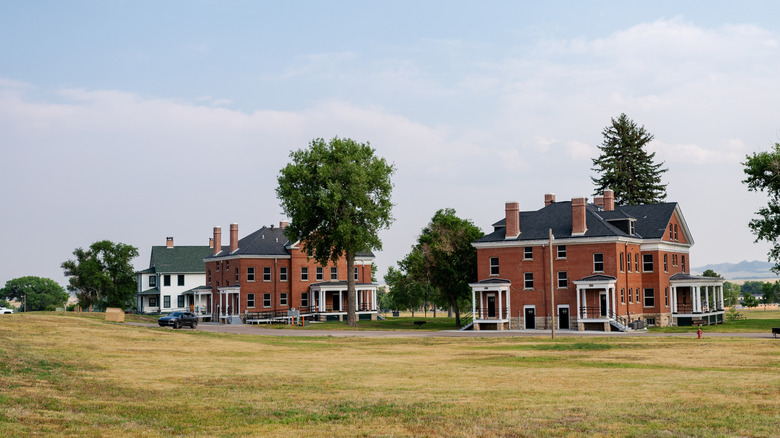Nebraska's Family-Friendly Educational State Park Seamlessly Blends Natural Beauty And Incredible History
Near Chadron, Nebraska, where you can get a taste of the American frontier and feel the cowboy spirit, is another gem of the Cornhusker State: Fort Robinson State Park. Once one of the most important forts in the West, Fort Robinson is now a family-friendly historical site, showcasing both Nebraska's rich and complex history, along with its natural beauty. Fort Robinson was established as Camp Robinson in 1874 and eventually became one of the largest forts in the region. It remained an active U.S. Army fort until after World War II, with reiterations as a base during the American Frontier Wars, a cavalry station, a Civilian Conservation Corps camp, a K-9 training center, an agricultural research center, and a POW camp.
After the military passed it to the state of Nebraska, it was eventually designated as a state park in 1962. Since its inception, Fort Robinson has been a symbol of the quintessential American West spirit as well as a reminder of the brutal treatment of Indigenous tribes. In 1877, famed Sioux leader Crazy Horse was killed here, and in 1879, Fort Robinson was the site of the tragic Cheyenne Massacre.
The long, convoluted history of Nebraska can be experienced firsthand in Fort Robinson, through the historic buildings, authentic stagecoach rides, chuck wagon cookouts, miles of horseback riding trails, and at the on-site Fort Robinson History Center. While history comes alive here, there's also plenty of modern entertainment for all ages. Stay in the original officers' quarters, swim in the indoor/outdoor pool, or take an exhilarating Jeep ride through the forested hills, sandstone bluffs, and classic prairie.
Highlights of Fort Robinson State Park, Nebraska
One of the highlights of Fort Robinson State Park is the setting. Surrounded by the Pine Ridge escarpment, with dramatic buttes, endless plains, and thick forest, it's also one of the best parks where you can see bison roam (other than Yellowstone). There are plenty of opportunities to enjoy the landscape, from trail rides, fishing in one of the many ponds, hiking, hunting (seasonally), mountain biking, and Jeep tours. Jeep tours and stagecoach rides are some of the best ways to get your bearings within the park while enjoying the history and the views.
The old Fort Complex is where most of the action is, as it's home to everything from the swimming pool, activity center, both museums, stagecoach center, horse barn, and world-class Post Playhouse. The Fort Robinson History Center displays artifacts from the fort's long history and has several buildings authentically preserved, inside and out, including a traditional blacksmith. The Trailside Museum is also in the Fort Complex, where you can immerse yourself in the geological history of the era. While many of the on-site accommodations have kitchens, you can also eat all three meals in the charming Fort Robinson restaurant (open during the summer season) and snacks like ice cream in Sutler's Store, located in the Activities Center.
How to get to Fort Robinson, and where to stay
As Fort Robinson State Park is in the far northwest corner of Nebraska, it's a good haul from the state's major metropolitan areas, like the capital, Lincoln (427 miles), or the largest city, Omaha (457 miles). However, Fort Robinson is two hours south of Rapid City, South Dakota, an artsy city full of charm and attractions situated between the Black Hills and the Badlands, and about two and a half hours northeast of Cheyenne, Wyoming. Due to its relative remoteness, it's best to drive to Fort Robinson, although the state park itself can be explored partly on foot, especially if you stay in the original Fort Complex. Spend a night in the soldiers' barracks or the former officers' quarters, which have been converted into cabins (available April through October). From here you'll be able to walk to the pool, the barn, the activity center, the playhouse, the restaurant, and more.
There are also several campgrounds, for both tents and RVs, within the state park. Mare Barn Campground is ideal for equestrian campers, while the Red Cloud Campground and Soldier Creek Campground provide a variety of electric and basic campsites. Wherever you decide to stay, you'll be able to immerse yourself in the history of the Old West, without sacrificing modern comforts (with the exception of camping, but you'll still have access to running water and electricity even then).


